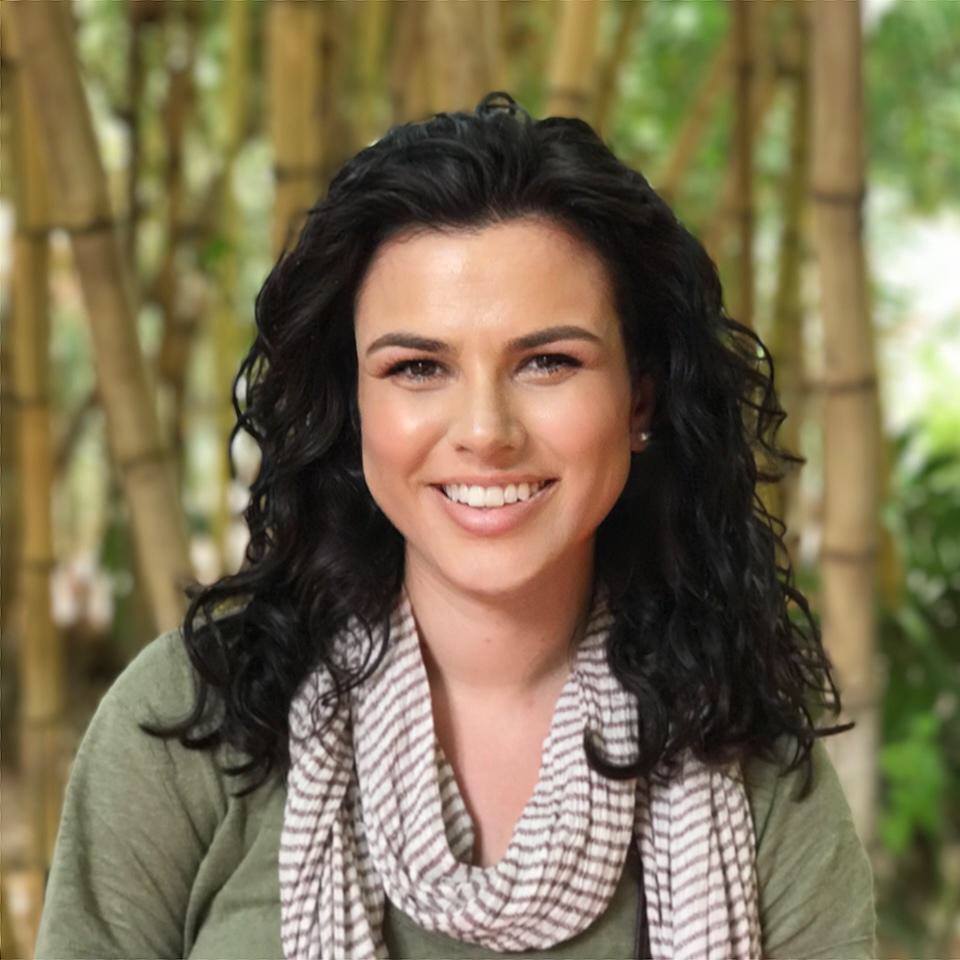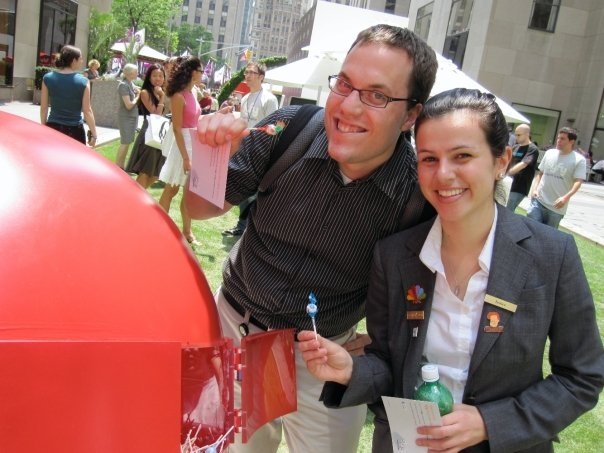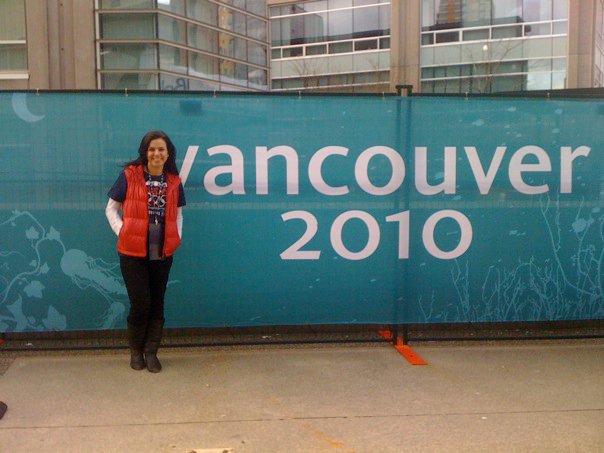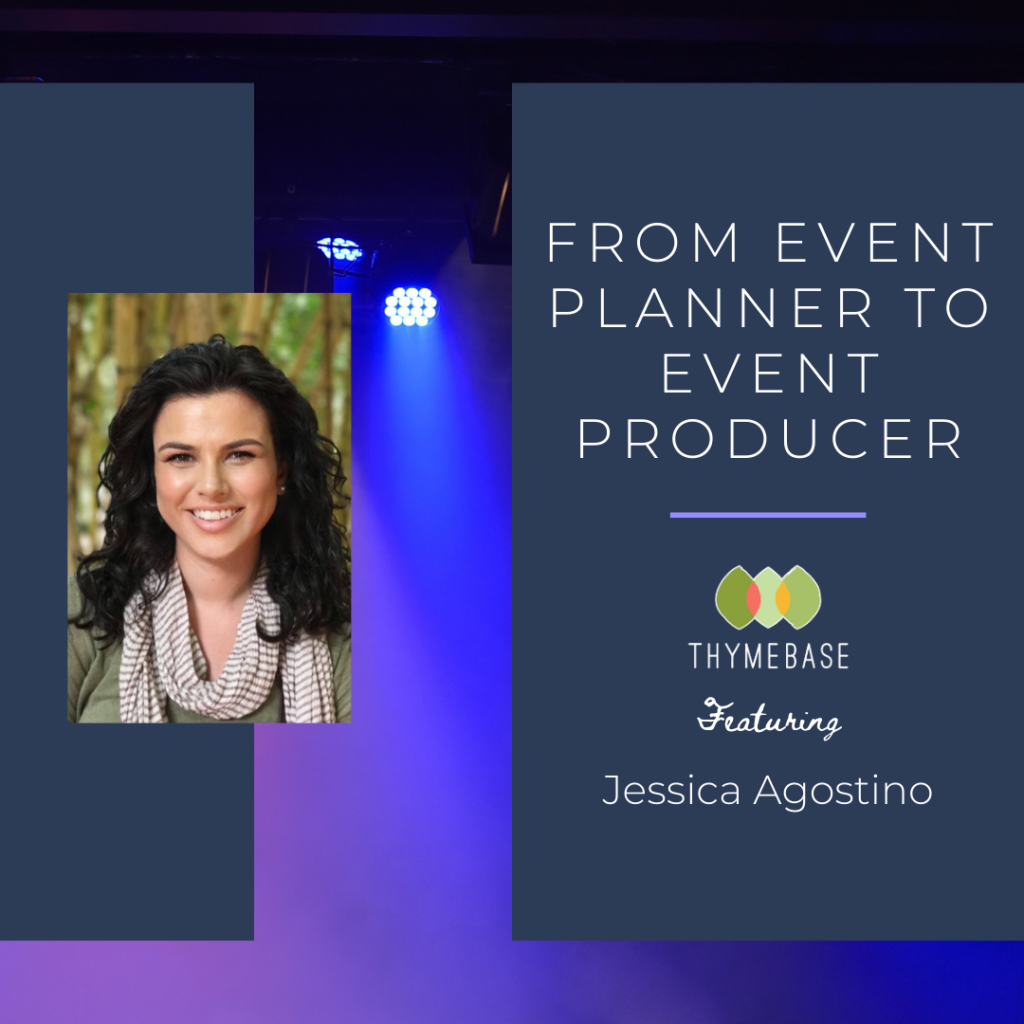What is an event producer? Well, there’s no doubt that event planners are used to wearing many hats and going with the flow. It seems like change is the only constant in this industry. Even so, the changes that the whole world has experienced in one short year can seem overwhelming for even the savviest, seasoned event planner.

And yet, it is precisely this change that has spurred one such professional, Jessica Agostino, on to even greater heights in her career. In the wake of COVID-19, she’s shifted from in-person events to virtual and grown from an event planner to an event producer.
While “event planner” and “event producer” might not seem that different, I talked with Jessica to find out more about the shift. She was quick to explain to me just how much things have changed.
Check out Jess’ travel blog, Jagsetter, to read about her travels and life as a digital nomad and remote freelancer in the events industry.
From Corporate Event Planner to Digital Nomad
Jessica began her career working for NBCUniversal as a page a little over ten years ago as part of the company’s postgraduate page program, which allows 50 college graduates to work for the company for one year to gain experience working in different departments throughout the company.

It was through that program, Jessica says, that she realized how much she loved working with event logistics. “I began to gravitate more towards assignments within the program that were logistics-based. This included working with on-air production teams & in public relations departments that produced events. In each department, I always found that I loved the event-related tasks more than anything else.”
Becoming A Freelance Event Producer
After she left the page program, Jessica was offered a freelance job working on the 2010 Vancouver Olympics with the corporate events team at NBCUniversal and ended up working with them for six months. “I was mostly based in New York City, but I also had the chance to go to the Olympics during the last week in Vancouver. That was really my first foray into heavy logistics planning. My role on that team was to coordinate the guest relations for around 700 clients that were being sent to the Olympics on behalf of NBCUniversal. It involved a lot of booking, travel arrangements, ticket coordination, and helping the team work on the agenda for all the attendees. It was a lot of scheduling.”

Jessica says she didn’t think she’d end up loving it as much as she did. Her time spent working on the Olympics made her certain she wanted to pursue a career in events. From there, she took several positions in marketing with NBCUniversal for the next five years until she took her final position with the company, working on the trade and marketing events team for the Syfy channel. “In that role, again, I found myself gravitating towards the events space. My director formed her own events team, and then I ended up joining her on that, and that’s when I began working full-time in events.”
After a couple of years with Syfy, Jessica moved to Univision – the biggest Hispanic television programming network in the US. She worked on the events team for around three years. “The team there was made up of about nine event planners or event producers – I use those words interchangeably here. We supported several teams within the company, including Ad Sales, Consumer Marketing, Corporate Communications, News & On-Air.”
Production-Based Events
Jessica loved the position with Univision. It was her first time working on actual hands-on event production rather than managing agencies that produced work. “I was in direct contact with vendors and our internal clients to put all of the puzzle pieces together to plan the events. So I gained exposure to many different types of events – conferences, cocktail parties, on-air events, press rooms, guest communications, and large-scale presentations, and I found that I loved it all,” Jessica remembers fondly.
“I especially loved production-based events. We produced a lot of webcasts while I was at Univision – which involved managing the in-person presentation as well as the technical aspects of the webcast being sent out to our thousands of employees. I think the webcasts were my favorite projects at Univision because I really loved working on the technical/production side of things.”
While she was working for Univision, Jessica was also working on corporate dinner and cocktail parties. “The role really ran the gamut of opportunity and allowed me to work on all sorts of events. Even with those on-air events that I mentioned, we’d sometimes pair them with in-person company-wide viewing parties. It was a lot of fun.”
Becoming A Remote Event Producer
Jessica decided to leave New York City two years ago to travel and work remotely, which meant saying goodbye to her corporate job and starting her own freelancing business with which she now manages a series of clients.
Before COVID-19 struck, Jessica would work on production teams and consult or manage projects from abroad. The teams would take the events and produce them onsite. Sometimes she’d fly to the event to help assist with the production. Still, most of the events she worked on were on a consultant or management basis from abroad.
Going Virtual With Events
Now that most events have gone virtual due to the global COVID-19 pandemic, Jessica says she’s been able to tap into her event production experience from her days at Univision. “I already had the experience of working on a webcast, which translates now to working on Zoom or some other type of video platform that we might have to use in these post-COVID days,” she explains, noting that a lot of the skills she gained in her previous jobs are transitioning well into the new virtual path of events.
Internet Speeds
The most critical thing to get right when planning a virtual event, Jessica says, is the internet connection. She recommends sending speakers a link to an online speed test to check to see their internet speed and make sure it’s strong enough for the day of the event.
Backgrounds
Another thing to keep in mind is the speakers’ backgrounds. “Most speakers are zooming in from their homes for virtual events now, which means that the production team isn’t building a background for them, and you have a little less control. It’s important to look at little nuances such as whether they’ve got competing logos in the background and make sure that their backgrounds translate well on camera. I’ve had to tell a few speakers to adjust their décor to ensure that the event looks great when filmed.”
Related: Virtual event set design.
Lighting
Something that goes hand in hand with a good background is good lighting. “We always tell the speakers that it’s good to have some light in front of you – something as simple as just putting a lamp on a stack of books,” Jessica explains. “You usually don’t have to pay or do anything too complicated to ensure that the lighting looks good. It’s also important to ask the speakers if the light in their room is natural because that can affect the way their room looks when the sun’s position changes. It’s never great when the speaker’s face disappears when the sun goes down, for example.”
Audio Quality
To round it out, Jessica says sound also plays a critical role in a virtual event’s success. “We like to have speakers with a microphone of some sort of headphones with a mic to ensure that it sounds good. You want to make sure that there’s no echo happening.”
Software
Once those things are sorted, Jessica says it’s crucial to choose a suitable software program to bring your event to fruition. Some of her favorites include Swapcard, which she says is great for hosting conferences with back-to-back panels, and Airmeet, where you can have conferences, speed networking, and networking parties all in one place. “So far, I’ve only worked on a couple of events with it, but I’ve loved Airmeet,” Jessica enthuses.
Jessica says that while some people are getting a bit fatigued with Zoom, the software definitely still has a place in the world of virtual events. “Say what you will about Zoom — everyone might be tired of it — but it works really well. It’s always reliable. If you’re working on a training session, for example, Zoom is great.”
A Changing Event Timeline
Once all of the necessary steps have been established, Jessica says, it’s important to remember that a virtual event’s planning timeline will probably look a little different than one for an in-person event.
“A lot of what’s happening now is experimentation because it’s still such a new way of working on events. So far, what I’ve seen happening is that the lead time is much shorter. You can organize virtual events with much less time and still have a very high attendance rate. But it really does depend on the nature of the event,” Jessica notes. “If you’re working on a corporate conference, for example, two weeks’ notice might be sufficient. We’ve sent invitations out two weeks in advance and still had a very high attendance rate, which actually surpassed what we’d seen previously for in-person events.”
What Are Good Attendance Rates For Virtual Events?
According to Jessica, the successful attendance rates for virtual events is dependent on several key factors. “First of all, you don’t have to have people in the same city that you’re in, so virtual events really extend your reach. Secondly, if you reach out to new clients, your target network expands. Depending on what the event is, people can now participate a little bit more passively in that they can multitask so that they can attend your event and do something else, so the need to get on their schedule minimizes,” she explains.
“However, if you’re working on something like a training session for one week, that attendee has to be engaged for the full week. You might want to explore a longer lead time for something like that because you want to ensure that you’re respectful to their schedules. For that, I would say a month, maybe a month and a half, is a good amount of lead time. You also to consider that people are working from home now and have additional factors that may impact scheduling, such as childcare.”
How Long Should A Virtual Event Be?
As to the question of how much time to expect a guest to devote to attending a virtual event, again, Jessica says it depends on what that event is. “I think the sweet spot for a virtual cocktail party would be having it run for two to three hours, with the understanding that people will pop in and pop out. If you’re targeting 100 people, not all 100 people will be there for the entire duration of the event,” she attests.
“For a conference, a half-day is right, maybe a four-hour conference with breaks. I would schedule at least one break for about 15 to 30 minutes. Four days with four hours per day for a conference is great. If you’re going to do a week-long conference, I think giving the attendees the option to watch the conference on playback is always a good idea because they might miss certain sessions. Offering the opportunity to actually access the recordings afterward is always great – think of it more as a video that you’re recording and a resource you’re giving them after. That alleviates the pressure of having to attend live.”
“You might end up with viewership rates even if the attendee rate at any given time is lower than you might want. You have to expect that attendance is going to be over a longer span of time, and viewership will be over a longer span of time versus it all happening at once.”
With all this talk of giving attendees the option to playback what they might have missed, I was curious to see what Jessica thought of digital conferences that feature pre-recorded material.
Should You Pre-Record Talks For Virtual Events?
She says that one great thing about virtual events is that if you’ve got a speaker you really want to include – a big name, for example, who will bring a lot of value to your event. And if there’s a scheduling conflict, pre-recording is a viable option. But Jessica also says that it’s one you should use with caution.
“In general, when and where possible, always go live. That’s something that people are craving: that intimate connection, now more than ever because everything is virtual. I think that if you pre-record, you eliminate that connection even further. And if you do live versus recorded, you can interact with the attendees more. You can have the speakers in the chat box answer questions right away after they speak, which adds value to the attendees. It might make them want to tune in live versus watch the recording afterward.”
Upping The Authenticity For A Better Audience Experience
I asked Jessica if she had any other tips to make sure that attendees truly feel an authentic connection while they take part in an event. She says that one way of achieving that is to make sure the audience gets a chance to participate in dedicated Q&A sessions.
“Giving more space for Q&A is even more important now. Let’s say if you have a 20-minute session, maybe have 12 minutes for the presentation and then eight minutes for Q&A,” Jessica advises. “Speaking as someone who has attended a lot of virtual events, what I love about these present times is that as an attendee, I have so much access to things all over the world. It’s not just that I can go to events where I’m currently living, but all over the world — it opens up a world of possibility. The accessibility of virtual events is incredible, and I think that should go beyond just the information. It needs to be as interactive as possible.”
Another way to keep things fresh and engaging, according to Jessica, is to include a networking component. “People are craving connection with others now more than ever. You have to balance that against what we might call ‘Zoom fatigue.’ I think leaving networking optional is often great, but you can be creative depending on the event. I’ve seen things like speed networking that have been really successful. You can do little cocktail parties. There are platforms now that mimic those pretty well. Another idea is to send physical items to people’s homes to bridge the gap between virtual and physical, and it makes it feel just a bit more authentic.”
Helping Sponsors See The Value In Virtual Events
One of the difficulties that event planners and producers planning virtual events can run into is some hesitancy from sponsors. Sponsors can be dubious about how much value they’ll really get out of an event that’s not traditional and in-person. But Jessica says it’s just a matter of thinking outside of the box. Ensure the sponsors’ expectations are at a realistic level while assuring them that they’ll still achieve their desired goals by taking part in the event.
“Sponsors need to understand that the event climate has changed, and so while they can’t necessarily receive the same value in the way they did with physical events, there are different ways to achieve what they’re trying to do by way of receiving impressions and interactions virtually. There are so many branding opportunities with virtual now where you can keep the sponsor’s logo in the attendee’s face throughout the event if you like. You can include the sponsor’s name on all of the same touchpoints you would with in-person events. You can include them on the invitation, the thank-you email, everything. Also set it up so that the attendee can come and speak with a sponsor during the scheduled time to learn a little bit more about the brand.”
A Board Perspective On Live Events
Looking back at everything Jessica told me, I was a little in awe of just how much experience she has with live events. I was curious to see how she’s had to adjust her thinking to shift to virtual events after so much success with traditional ones. And going from event planner to event producer.
“For the past seven years of my career, I’ve been both an event producer and an event planner. I think industry-wide, the words have different meanings to different people. Still, the way I see it, an event planner thinks of the event cohesively: they think a lot about the attendee experience and what it’s like from start to finish. When are the attendees receiving their invitations? What does the timeline look like? What sorts of decor will be used? And what does the floor plan look like? All of those are key event elements that event planners think about,” Jessica tells me. “For virtual events, you’ve got to be both because we’re still thinking about the attendee experience. In the end, I’d say it’s become a fusion of both because people are wearing both hats. I’ve been wearing both hats through these COVID times.”
Mistakes Are Part of the Journey
In the end, Jessica says that now is the time when event producers and planners need to go that extra mile to make sure their events feel personal and authentic. She reiterates that wearing both hats – planner and producer – is how to achieve this.
“We all know how to be event planners and event producers pre-COVID. We’re all starting to figure out how to do this thing virtual, but we’re still all figuring it out, and there’s always all of these new software programs that we’re working with. It can be scary and exhausting to always feel like you have to keep up, and it feels like we’re constantly learning. Just don’t be afraid to make a lot of mistakes. Strive for perfection, but know that many mistakes are going to happen.”
“These are really tough times for everyone, for the attendees, and for yourself. Just do the best you can, and it’ll be a great event. Mistakes will happen and are happening, and everyone’s a little bit uncertain about how to navigate this new world. We’re all experimenting with different things, some of which will work, some of which will not. Don’t be afraid to be creative. There isn’t a playbook for how to plan virtual events. Now is the time to think about what you can do differently to stand out.”
Hard Work Is In The Event Producer’s DNA
I’m sure that countless other talented event planners and producers are working just as hard as Jessica. It’s a testament to just how passionate, and creative people in the events industry are. And just how resilient we can be in the face of something as big as COVID-19.

